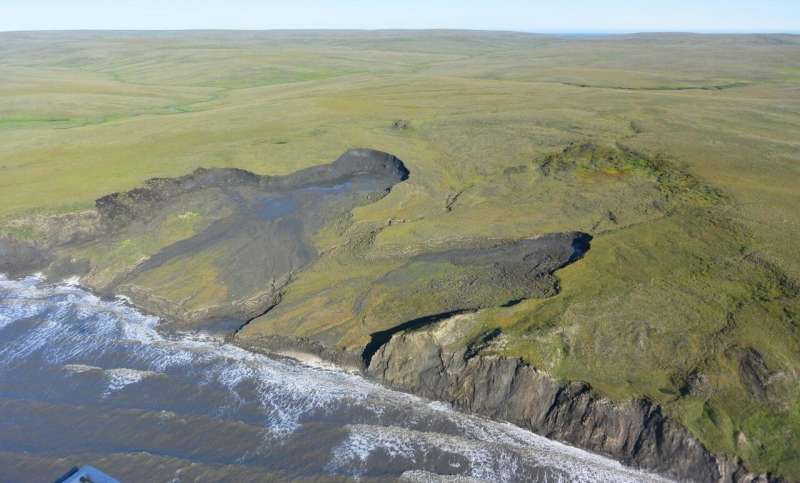Coastlines' contribution to climate change might have been underestimated

Permafrost coasts make up about one third of the Earth's total coastline. As a result of accelerated climate change, whole sections of coastline rapidly thaw, and erode into the Arctic Ocean. A new study published in the journal Geophysical Research Letters now shows that large amounts of carbon dioxide are potentially being produced along these eroding permafrost coastlines in the Arctic.
"Carbon budgets and climate simulations have so far missed coastal erosion in their equations even though it might be a substantial source of carbon dioxide," says George Tanski of Vrije Universiteit Amsterdam, lead author of the study. "Our research found that the erosion of permafrost coastlines can lead to the rapid release of significant quantities of CO2, which can be expected to increase as coastal erosion accelerates, temperatures increase, sea ice diminishes, and stronger storms batter Arctic coasts."
The study was carried out during Tanski's time at the Alfred Wegener Institute, Helmholtz Centre for Polar and Marine Research (AWI), and the GFZ German Research Centre for Geosciences. Co-Authors come from AWI, GFZ, and the Universities of Hamburg and Potsdam. The study is part of the Nunataryuk research project, coordinated by AWI. The project aims to analyse permafrost thaw, understand its impacts on indigenous communities and other populations, and develop mitigation and adaptation strategies.
Simulating erosion effects in the lab
For the new study, the researchers simulated the effects of erosion in a lab experiment. To find out how much carbon is released into the atmosphere along eroding Arctic permafrost coasts, they collected permafrost samples from Qikiqtaruk (also known as Herschel Island) off the northern coast of the Yukon in northwest Canada, and seawater from offshore. They mixed permafrost and seawater samples and then measured the greenhouse gases emitted over the course of four months, the average length of open-water season in the Arctic.
The researchers found that CO2 was released as rapidly from thawing permafrost in seawater as it is from thawing permafrost on land. Previous research had documented that thawing permafrost on land causes significant releases of greenhouse gases. This new research indicates that eroding permafrost coasts and nearshore waters are also a potentially notable source of CO2 emissions. It draws into question carbon budgets that have identified the coastal zone mainly as a point of passage for carbon from land to sea, neglecting possible carbon transport into the atmosphere.
More information: G. Tanski et al, Rapid CO 2 Release From Eroding Permafrost in Seawater, Geophysical Research Letters (2019). DOI: 10.1029/2019GL084303
Journal information: Geophysical Research Letters
Provided by Helmholtz Association of German Research Centres




















